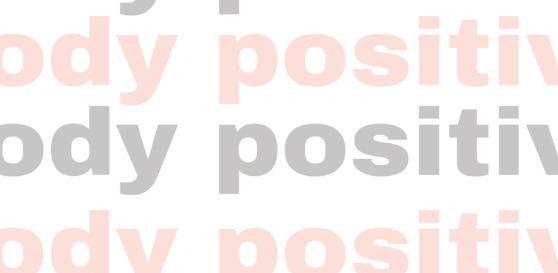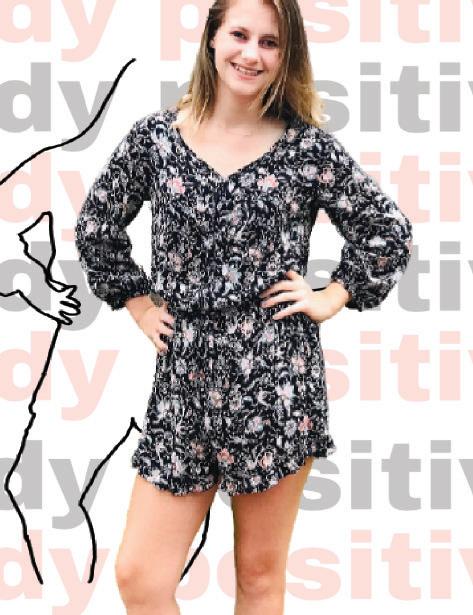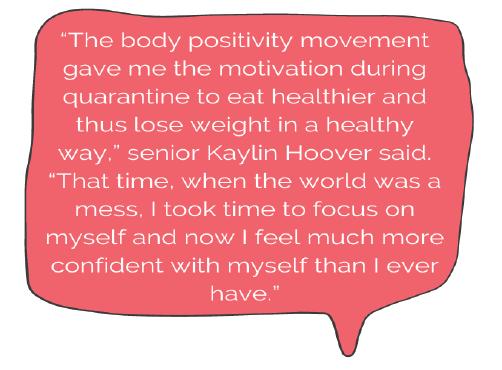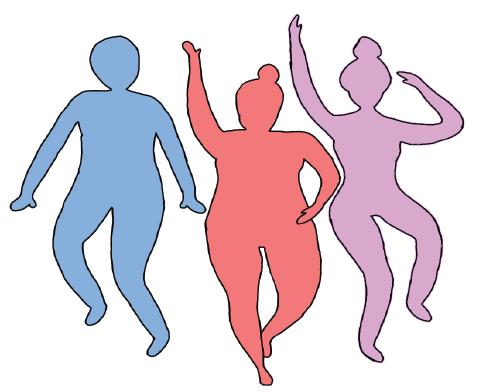
7 minute read
Body Positivity
“We were born to be real, not perfect,” freshman Katelyn King said.

Advertisement



“There aren’t many moments that I get to shine, but for the little time I do get to shine, it is the only thing I can focus on, like the sunset,” junior Ethan sunset,” junior Ethan Bravo said. Bravo said.




Body Positivity




“Size doesn’t de ne your beauty,” sophomore Tina beauty,” sophomore Tina Atmani said.






Sophomore Kristi Lilek takes a picture in the sunshine on Jan. 8. Photo used with permission of Kristi Lilek.
Promoting positivity

Movement encourages students to be more con dent with their bodies
“I always hype up my friends in the comments whenever they post a picture of themselves and direct message them to say how beautiful they are,” sophomore Kristi Lilek said.

Lily Thomas thomalil000@hsestudents.org Malak Samara samarmal000@hsestudents.org
Fi y percent of teens are self-conscious about their bodies, according to the National Organization for Women Foundation. In light of this, movements, such as the body positivity movement, have sprung up across the country. Organizations within the movement, like The Body Positive, aim to change the tone of conversation regarding body image by creating an accepting community that strays from potentially negative societal views. “I think it’s amazing, it’s great, and it’s something that needs to be done and it should have been done sooner,” freshman Saanvi Ibrahimpatnam said. “At least I feel like now, people who do struggle with it are a little more open. They’re aware that what they’re dealing with isn’t something that they only deal with. It’s a lot more open and so people can share and just feel a lot better, so I’m all for it.”
History of the movement
According to an article from Penn State, the earliest form of body positivity dates all the way back to the Victorian era’s dress reform movement, which encouraged women to wear more sensible and practical clothing as opposed to the restrictive and objectifying fashionable clothing of the time. The next era of body positivity was in the 1960s, with a call to accept people regardless of their physical attributes. The movement today has much of the same message, while evolving to combat modern issues, such as a collective heightened exposure to unrealistically edited photos due to the availability of media. Many companies have contributed to the movement, from Dove’s 2004 “Real Beauty” campaign to Aerie’s promise in 2017 to not retouch or digitally alter their model’s photos in the spirit of setting realistic standards for women. “I think the body positivity movement has probably done a lot with fashion,” Meghan Farr, local therapist who helps with body While on vacation, senior Kaylin Hoover poses for a picture. Photo used with permission of Kaylin Hoover.
image issues said. “We all wear clothes and that’s one of the ways we identify, so when you can actually go into a store and nd di erent sizes for di erent shapes, I think that’s a real positive.”
Practicing positivity
Farr helps her clients work on their body image issues by viewing it as a progression. For example, she may have them name one thing every day that they like about themselves, both internally and externally. “[The body positivity movement] lets people know that there is room for more than one type of person and you don’t have to look a certain way to be acceptable,” Farr said. “I think we all could use a little bit more of that.” The Body Positive, which provides and promotes body positive programs in schools and communities, says their main goal is to “end the harmful consequences of negative body image.” One of these consequences is not feeling good enough, which is a common cause of anxiety and depression according to Farr. “I just feel great about it, you know?” Ibrahimpatnam said. “Because I’ve struggled with it sometimes, especially when I was younger, and now I’ve been seeing all these beautiful women and men just showing how everybody’s perfect. It just makes me feel better because I don’t feel alone. I feel like ‘okay they’re right, I am amazing’, like I’m literally blessed.”
Health Concerns
As the body positivity movement continues to gain traction, some critics have brought up complaints regarding the movement. Most critics bring up health concerns, as they worry the movement might encourage unhealthiness. “I think we still have to focus on our health in a physical sense,” Farr said. “We don’t have to look a certain way, there’s no exact right way to look, which I love that about the body positivity movement, but there are concerns.” According to Farr, some of these concerns come from studies showing that those who are overweight may be at a greater risk of having high blood pressure, diabetes and other complications. On the other end of the spectrum, being underweight can result in nutritional de ciencies and a weakened immune system, according to the United Kingdom National Health Services. “It’s not giving permission to just be unhealthy, but I think we keep talking about it and we don’t come from a place of shaming each other,” Farr said. “That does not work. In terms of behavior change, it’s not e ective for lasting results, anyway.”
Keeping it relevant
In order to keep the message of the movement going, Farr suggests continuing to talk about it and looking at it through di erent angles. “To me, it’s just loving the body that you were put in,” freshman Katelyn King said. “I mean, everyone has insecurities, no one can not have insecurities. That’s just a way of life, but having body positivity is being positive in your own body and being positive to other people’s bodies, not body shaming them or anything. Making sure that everyone feels welcomed and loved in their own body and being loved in your own body, too.”
Incorporating Positivity
H O W T O C O M B A T B O D Y I M A G E I S S U E S
D e t o x
Try taking a 3-7 day break from social media and see if not being exposed to certain harmful forms of media helps. J o u r n a l
Keep a journal that you use to check-in with yourself and find positives about yourself to write about.
R e f l e c t
Find one thing you like about yourself both internally and externally. For example, maybe you ' re a good friend or you like your eyebrows.
Take a look at what you expose yourself to. Who are you hanging out with? What content are you looking at? If there are negative impacts, consider taking time away from the things that cause them.
S h i f t t h i n k i n g
Instead of thinking about the negatives, focus on the positives. For example, think about what you are good at, what you like about yourself, etc. E v a l u a t e
A L L I N F O R M A T I O N F R O M T H E R A P I S T M E G H A N F A R R
INFORGRAPHIC BY LILY THOMAS






